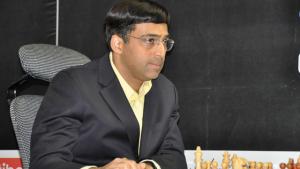
Steinitz Defense: World Champion Openings
Opening choice is a very complicated subject, bound up not just in questions of chess theory and principles, but also in individual personality and style, and even the current state of society.
When picking an opening today you need to consider your opponent's possibilities of preparation with a computer. This was not an issue some years ago.
Thus it might be a great choice to play the Dragon against the older player who does not own a computer, but the very same opening might be a disastrous choice against the young and ambitious player who is preparing with his laptop.
Another factor is what kind of talent your opponent is. For a variety of economic and social reasons, some players are able to get high-level training, focus solely on chess, and play frequently with strong players, while other players cannot. Thus while two players might have the same rating and overall strength, the latter's strength will be more composed of natural talent and innate understanding.
There is a big difference and this should affect your opening choices.
Choosing the right opening for your opponent has become even more important in recent years. It is the spinning roulette wheel of the chess game. After any negative (loss or perhaps draw) result, you might second-guess the wisdom of your choice.

It is very possible on that day, against that opponent, a different opening choice could have made a difference, even if the one you played was perfectly sound objectively. But it is never possible to know how it might have turned out.
The same is true in choosing your own opening repertoire in general. Temperament, style, the state of opening theory, your typical competition, and even aesthetics come into play. If you typically play in against players of a similar level, then you can have one opening repertoire -- one where you can play more objectively.
If, on the other hand, you play in open tournaments mostly against lower-rated players (as I do), then you need different openings, since most of the time a draw is not a success, even with Black. If you are an amateur-level player, things are vastly simpler, since the question of specific preparation hardly enters the equation. Then you can play practically any sound opening that you like, but you should still take into account the tournament situation and any knowledge you have about your opponent's temperament.
So what works at one time might not work in another, and what works for one player (or against one player) might not work for another player.
In this series of articles we will see how each world champion has used a particular opening and made it his own, creating new ideas and showing its value. Their choices were connected with all the things I mentioned: the era in which they lived, their style and personality, and so on.
We will begin with the first world champion, Wilhelm Steinitz, and his trademark defense against the Ruy Lopez, the Steinitz Defense.
The Steinitz Defense occurs after the moves 1.e4 e5 2.Nf3 Nc6 3.Bb5 d6. This is separate from the much more popular Steinitz Defense Deferred, where the moves 3...a6 4.Ba4 are included before 4...d6 -- although Steinitz himself also played it this way for a couple of years near the end of his career.
The Steinitz Defense proper is hardly hot theory nowadays. Nevertheless, it retains its basic soundness. 3...d6 numbers among the basic "normal" moves in that position, along with the developing moves 3...Nf6 and 3...Bc5, and 3...a6, chasing the bishop back.
The Steinitz Defense is closely connected to Steinitz's positional theories that he introduced to the chess world. Central among these was his theory of the center: that one should create a strong point in the center, protect it carefully and base one's play around it.
A player who has a strong center has nothing to fear from any attack elsewhere on the board. This theory is still valid today, even among the sharp, theoretical openings and deep analysis. When Black plays ...e7-e5 in the Najdorf, leaving the d6-pawn backward but creating a strong point on e5 and gaining space in the center, he is following Steinitz's theories.
Every Najdorf player knows about the sudden stability and safety that Black gets when he plays ...e7-e5.
Thus Steinitz's approach to his defense was in line with his theories. He would protect e5 carefully, often with the maneuver ...Ng8-e7-g6 and sometimes even ...f7-f6.
Against his great rival, Chigorin, we see an example of a typical Steinitz game. A philosophical and eccentric approach to the opening, a deceptively dangerous position, and finally tricky tactical resources:
Steinitz's results with his opening, to be honest, were not particularly great. His result with it in his 1894 match against Emanuel Lasker was disastrous.
In most games, Lasker convinced Steinitz to capture ...exd4 at some moment, and in the open games outfoxed his older opponent tactically.
In the following game, we will see how this happened. Steinitz used his central control to refute Lasker's premature kingside attack, but once all the philosophical questions were settled and all that was left was to actually win the game, Lasker proved to be the sharper practical player.
Ultimately, Steinitz's theories formed the basis of all chess thought.
Indeed, the very concept that a chess player must have a "guiding principle" made it much easier to play chess. His defense to the Ruy Lopez remained popular for some time, and was favored by the next two world champions, Lasker and Jose Capablanca, albeit with some modifications.
Nowadays it is a rather eccentric choice, and when it is used today Black tends to make the early capture ...exd4 followed by ...g6 and ...Bg7 -- a much more modern style of play. Nevertheless, Steinitz's concept of the defense persists in the more common deferred version, including his favorite maneuver ...Ne7-g6.






